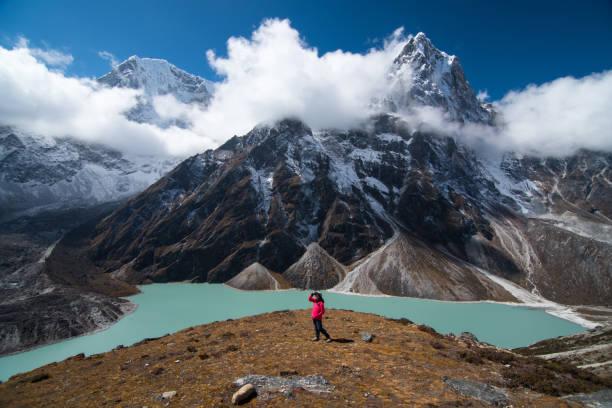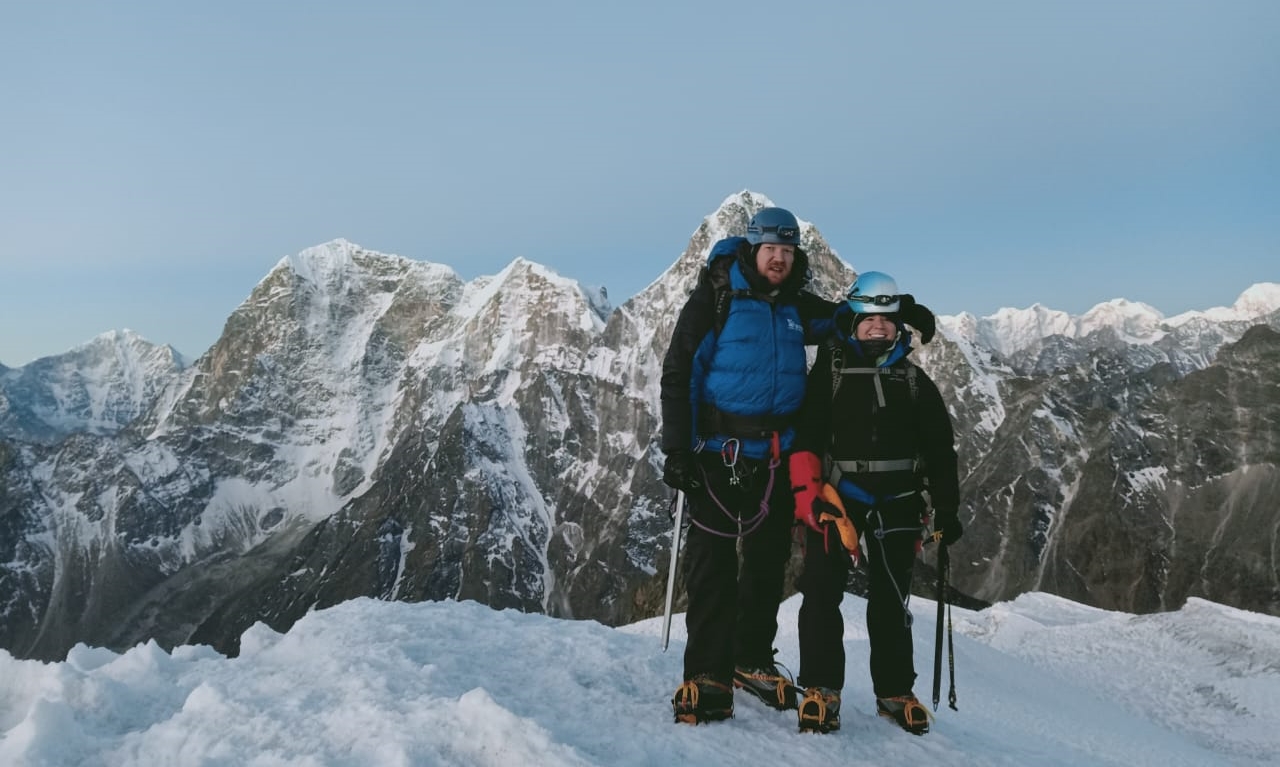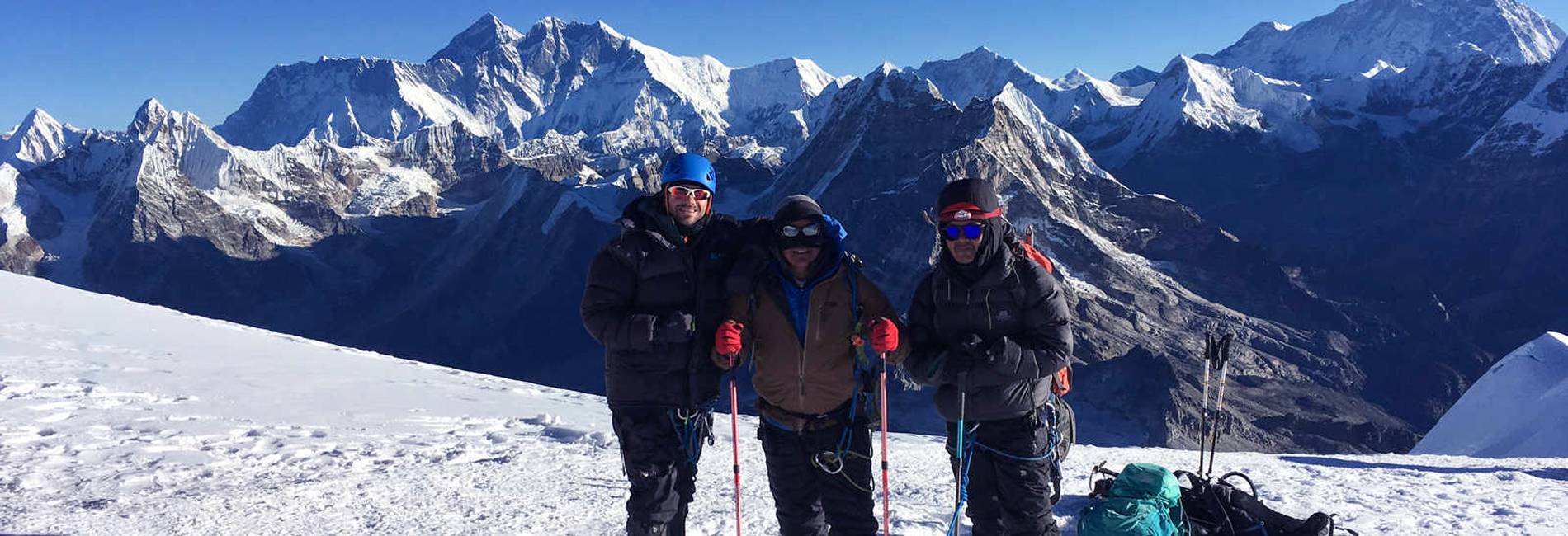26th August, 2025

Aug 02, 2024
Best Time for Lobuche Peak Climbing
- Overview of Lobuche Peak
- Ideal Climbing Seasons
- Spring Climbing: Benefits and Challenges
- Autumn Climbing: Advantages and Considerations
- Monsoon Impact on Climbing Conditions
- Temperature and Weather Patterns
- Acclimatization Strategies by Season
- Essential Gear for Seasonal Variations
- Planning Your Itinerary: Timing Tips
- Conclusion: Choosing Your Climbing Window
Climbing Lobuche Peak is a remarkable adventure that demands careful consideration of timing to ensure a safe and successful ascent. The peak, located in the Everest region of Nepal, is a challenging climb that is best undertaken during specific seasons when weather and climbing conditions are most favorable.
Spring (March to May) is widely regarded as the best time for climbing Lobuche Peak. During these months, the weather is generally stable with clearer skies and more predictable conditions. Temperatures range from -5°C to -10°C (23°F to 14°F) at high altitudes, making it manageable for climbers. Snow conditions in spring are typically more consolidated, which reduces the risk of avalanches and improves the safety of climbing routes. Additionally, spring provides good visibility and allows for effective acclimatization, crucial for preventing altitude sickness.

LOBUCHE PEAK CLIMBING
Lobuche East (6,119m/20,075ft), set in Nepal's stunning Khumbu on the Nepalese side of Everest.The best time to go trekking in Nepal is in Autumn (September-November) and in...
Autumn (September to November) is another excellent season for climbing Lobuche Peak. Following the monsoon season, the autumn months offer crisp, clear air and stable weather conditions. Temperatures during this period range from 0°C to 5°C (32°F to 41°F) at the base camp, which can be colder at higher altitudes. While autumn is less crowded than spring, climbers should be prepared for the colder temperatures and potential variable snow conditions. Monitoring weather forecasts and being ready for sudden changes is important during this time.
Summer (June to August) and winter (December to February) present more challenges for climbing Lobuche Peak. The summer monsoon season brings heavy rains and snow, increasing the risk of landslides, avalanches, and slippery trails. Winter, while offering breathtaking snowy landscapes, involves extremely cold temperatures, with risks of frostbite and severe weather conditions. Both seasons require advanced preparation and adaptability to changing conditions, making them less ideal for most climbers.
Choosing the best time for Lobuche Peak climbing involves weighing these seasonal considerations and preparing accordingly. Spring and autumn remain the most favorable seasons for a safer, more enjoyable climbing experience, offering balanced weather and optimal conditions.
Overview of Lobuche Peak
Lobuche Peak, a striking summit in the Everest region of Nepal, stands at 6,119 meters (20,075 feet) and is a sought-after destination for mountaineers seeking a challenging yet rewarding climb. The peak is part of the Khumbu region's rugged terrain, offering climbers breathtaking views of the Himalayas, including the towering Mount Everest and the majestic Nuptse. Climbing Lobuche Peak is a demanding endeavor that requires a blend of technical skills, physical endurance, and acclimatization.
The ascent typically involves a combination of trekking and climbing, with climbers often beginning their journey from Lukla, proceeding through the Everest Base Camp, and eventually reaching the Lobuche Base Camp. The climbing route ascends through the Lobuche Glacier and involves negotiating a mix of rock, ice, and snow. The peak's challenging conditions make it a significant step for climbers looking to transition from trekking peaks to more demanding high-altitude climbs.
Ideal Climbing Seasons
The ideal times to climb Lobuche Peak are during the spring and autumn seasons. These periods offer the most stable weather conditions and optimal climbing conditions. The spring season, from March to May, provides relatively mild temperatures, clearer skies, and less risk of severe weather. Similarly, autumn, from September to November, offers clear visibility and cooler temperatures following the monsoon, making it another prime window for a successful ascent.

LOBUCHE PEAK SUMMIT RETURN BY HELICOPTER
A real climbing adventure that will leave you stunned at the beauty of the Himalayan Mountains. The Lobuche Peak Climbing expedition in the spectacular Khumbu region of Nepal has been ranked by Lonely...
Spring Climbing: Benefits and Challenges
Spring, extending from March to May, is the most popular time for climbing Lobuche Peak. The weather during this period is generally favorable, with temperatures ranging from -5°C to -10°C (23°F to 14°F) at high altitudes. Spring provides relatively stable weather conditions and good visibility, crucial for navigating the peak's challenging terrain. The snow conditions are typically well-consolidated, reducing avalanche risks and making climbing routes safer.
However, spring climbing comes with its own set of challenges. The popularity of the season means more climbers on the trails, which can lead to crowded conditions, especially at base camps. Additionally, spring weather can be unpredictable, with the potential for sudden snowstorms or temperature fluctuations.
Autumn Climbing: Advantages and Considerations
Autumn, from September to November, is another excellent season for climbing Lobuche Peak. After the monsoon season, the weather clears up, providing crisp, clear skies and stable conditions. Temperatures during autumn generally range from 0°C to 5°C (32°F to 41°F) at high altitudes, which, while colder, is manageable for climbers with proper gear. The reduced number of trekkers and climbers in autumn can result in a more peaceful experience and less congestion on the routes.
Nevertheless, autumn climbing also presents challenges. The weather can be colder, with increased risks of frostbite and exposure, particularly during early mornings and nights. Additionally, snow conditions may be less predictable, with varying depths and stability affecting the climbing routes.
Monsoon Impact on Climbing Conditions
The monsoon season, from June to August, is generally not recommended for climbing Lobuche Peak. This period brings heavy rainfall and frequent snow, which can significantly impact climbing conditions. The monsoon causes the trails to become muddy and slippery, increasing the risk of landslides and avalanches. The heavy precipitation can also lead to unstable snow conditions, making the climbing routes more hazardous.
Moreover, the monsoon season often results in poor visibility, with thick clouds and frequent storms obstructing views and complicating navigation. These factors make the monsoon season the least favorable time for climbing Lobuche Peak, necessitating careful consideration and planning if attempting to climb during this period.
Temperature and Weather Patterns
Lobuche Peak, situated in the Everest region of Nepal, experiences significant temperature fluctuations and weather patterns depending on the season. Understanding these patterns is crucial for planning a successful ascent.
Spring (March to May): During spring, temperatures at higher altitudes on Lobuche Peak typically range from -5°C to -10°C (23°F to 14°F). The weather is generally more stable with clearer skies, providing better visibility and safer climbing conditions. However, climbers should be prepared for occasional snowstorms and temperature swings.
Autumn (September to November): In autumn, temperatures at high altitudes range from 0°C to 5°C (32°F to 41°F). This period is marked by clear skies and reduced cloud cover following the monsoon, leading to excellent visibility. The weather is generally stable, though nights can be very cold, and frost is common.
Monsoon (June to August): The monsoon season brings heavy rains and snowfall. Temperatures at high altitudes can be highly variable, but conditions are generally unfavorable due to excessive moisture. This results in slippery and dangerous conditions on the mountain.
Winter (December to February): Winter is characterized by very cold temperatures, often plunging below -15°C (5°F) at high altitudes. The weather is typically clear, but the extreme cold can pose risks such as frostbite. Heavy snowfall can also affect climbing conditions.

LOBUCHE PEAK EXPEDITION 14 DAYS
The Lobuche Peak Expedition is a 14-day trekking adventure that takes you to the heart of the Khumbu region in Nepal. It is a popular trekking peak in the Himalayas, with stunning views of the surroun...
Acclimatization Strategies by Season
Spring: During spring, acclimatization strategies should include gradual ascent to allow your body to adjust to the altitude. Utilize rest days at strategic points, such as Lobuche Base Camp and the higher acclimatization camps, to help your body adapt.
Autumn: Similar to spring, acclimatization in autumn involves a slow and gradual ascent. However, due to potentially colder temperatures, it’s essential to monitor signs of altitude sickness closely and adjust your pace as needed.
Monsoon: Climbing during the monsoon is challenging, and acclimatization is even more critical. Due to unpredictable weather, ensure you have extra acclimatization days built into your itinerary to account for potential delays.
Winter: Winter climbers must take extra precautions for acclimatization due to the extreme cold. Ensure you have adequate rest days and consider adding extra acclimatization stops to minimize the risk of altitude sickness and cold-related issues.
Essential Gear for Seasonal Variations
Spring: Essential gear for spring climbing includes a mix of thermal clothing, waterproof jackets, and layered insulation. Crampons, ice axes, and other technical climbing equipment should be in good condition, as spring can bring occasional snowstorms.
Autumn: In autumn, focus on layering systems that allow for flexibility with varying temperatures. Include insulated sleeping bags rated for cold temperatures and sturdy, waterproof clothing to protect against frost and occasional snow.
Monsoon: For the monsoon season, prioritize waterproof gear, including rain jackets and pants, as well as sturdy, water-resistant boots. Ensure your climbing equipment is suited for wet conditions to handle the increased risk of slips and avalanches.
Winter: Winter climbing requires high-quality insulated gear to withstand extremely low temperatures. Pack thermal clothing, heavy-duty sleeping bags rated for sub-zero temperatures, and gear for snow and ice conditions, including snowshoes or skis if necessary.
Planning Your Itinerary: Timing Tips
Spring and Autumn: Aim to start your climb early in the season to take advantage of the best weather conditions. Plan your itinerary with extra days for acclimatization and weather delays. Spring and autumn offer the best visibility and weather stability, making them ideal for a successful ascent.
Monsoon: If attempting to climb during the monsoon, prepare for a flexible itinerary that accounts for potential delays. Be ready to adapt to rapidly changing weather conditions and ensure that your plan includes extra acclimatization days.
Winter: Winter climbing requires meticulous planning, with careful attention to weather forecasts and potential risks of extreme cold. Consider shorter itineraries and build in extra days for acclimatization and weather-related delays.

MERA PEAK CLIMBING
Mera Peak Climbing is an exhilarating adventure in Nepal that gives you an opportunity to reach the summit of Mera Peak at more than 6400m above sea level. Actually, it is the highest climbing (w...
Conclusion: Choosing Your Climbing Window
Choosing the optimal time for climbing Lobuche Peak is crucial for a safe and successful ascent. Spring and autumn are generally considered the best seasons due to favorable weather conditions and manageable temperatures. Monsoon and winter present significant challenges, including adverse weather and extreme cold, which require thorough preparation and flexibility. By understanding the seasonal variations and preparing accordingly, climbers can maximize their chances of a successful and enjoyable climb on Lobuche Peak.
Any Questions? Let Us Know.
Recent Posts
17th June, 2025


















